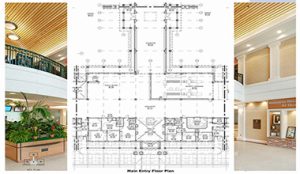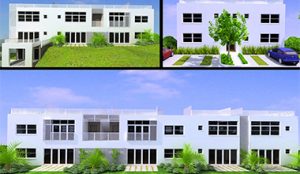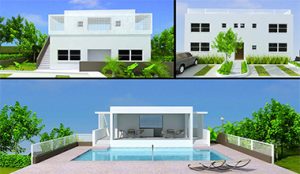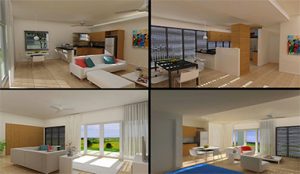PATRICK VAUGHAN
 You might not know it off hand, but Barbados– a tiny island now known mostly for pop star Rihanna – is an island paradise with a rich architectural history. Its formative slave trading years left a legacy of Jacobean and Georgian plantation houses dating as far back as the 1600s, as well as the much more modest Chattel house made of timber and set on stone foundations. Both building types still dot the Barbadian landscape, co-mingling easily with more modern structures.
You might not know it off hand, but Barbados– a tiny island now known mostly for pop star Rihanna – is an island paradise with a rich architectural history. Its formative slave trading years left a legacy of Jacobean and Georgian plantation houses dating as far back as the 1600s, as well as the much more modest Chattel house made of timber and set on stone foundations. Both building types still dot the Barbadian landscape, co-mingling easily with more modern structures.
But today’s Barbadian landscape is changing, and son of the soil and architect, Patrick Vaughan, is contributing to that change; an evolution that seeks to modernize and reinterpret the local vernacular of British, African and Tropical Blends. His aim, other than to create exciting livable spaces, is to echo the past with his designs while simultaneously leaping into the future.
Sounds ambitious, but if you know Patrick Vaughan, ambition is in his DNA. His parents were both respected educators “with a flair for the arts”. His mother is a retired high school art teacher while his dad, now deceased, was an elementary school principal and accomplished musician, organist and choirmaster. So it’s no wonder that with this kind of influence, Patrick’s vision is tempered with his own brand of creativity.
His early parental influences coupled with a sound local educational background were the building blocks needed for his undergraduate architectural studies at the University of Technology (UTECH) in Jamaica and graduate studies at Florida Agricultural and Mechanical University (FAMU) where he earned a Master of Architecture degree in 2002. All the while his architectural influences grew and resonated strongest with architects who had a desire for creating iconic structures, like Frank Gehry, and those who respond sensitively to the environment, like Glenn Murcutt.
Since then, Patrick’s creative eye and talent have led him to work on quite a few projects both in and outside the Caribbean, as well as mainly along the East Coast of the USA and one airport project in Nigeria.
He notes: “Just about all the projects I’ve worked on have been collaborative efforts where I was a part of design teams, and most are quite large”. In fact, when he worked at Architects Cubed Inc. in Barbados, he was almost singlehandedly responsible for the Boarded Hall Green project, a new eco-friendly gated condominium community on the island that consisted of 68 units. Its "green" features include landscaping watered by an on-site treatment plant, solar-powered street lights, recyclable garbage disposal, solar heated water and optional solar photovoltaic electricity. Patrick’s role was to develop and fine-tune the design past its preliminary design stage and into construction.
“The overall aim was to create affordable housing without stripping it completely of eye-catching design that tends to inflate the cost. Because it is consistently warm with a strong dependable breeze, it made sense that the units were open to the outdoors to take advantage of this," he explains.


In Barbados, as part of the green initiative, the opportunity is taken wherever possible to open up buildings to allow the breeze to flow through, rather than rely on motorized cooling systems.
He points out that Barbados routinely takes advantage of solar harvesting for heating water and producing electricity, adding that collecting rainwater for irrigation purposes is a regulated requirement for all new construction and in some instances “grey” water is collected and treated, again for irrigation purposes.
“For residential projects, like Boarded Hall Green, although dryers are provided, discreet drying yards are incorporated where it is practical to reduce energy consumption. This all lends into the island’s new ecologically sensitive design push,” he says.




With a view to having his own architectural firm by 2015, where he can exercise greater design freedom, Patrick quips: “Unfortunately, unrestrained creativity is almost always stifled by budget. Generally, clients have a fairly clear idea of what they would like to have, but there is always room to sneak in your own brand of creativity”. To illustrate this last point, he recalls going through several iterations of ultra-modern glass and steel proposals for the Augusta Regional Airport, but the client was quite set on an airport that was reminiscent of the city’s many plantation houses.
To remain relevant, Patrick is always keen to embrace technology in his design process and regularly uses cutting-edge architectural tools like Sketchup, Revit, 3dStudioMax, and Photoshop as well as AutoCAD.
So as the history and tradition of coral stone and terracotta tiles, which made up part of the framework of the architectural heritage in Barbados erodes away, it doesn’t seem so bad when you have the future of architecture in the hands of the likes of Patrick Vaughan.






